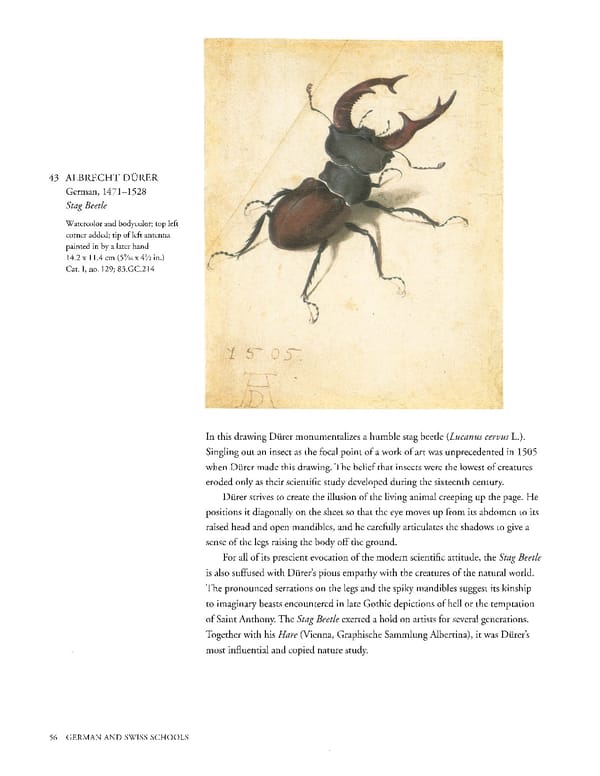43 ALBRECHT DURER German, 14711528 Stag Beetle Watercolor and bodycolor; top left corner added; tip of left antenna painted in by a later hand 14.2 x 11.4cm (5 9/16 x 4½ in.) Cat. I, no. 129; 83.GC.214 In this drawing Durer monumentalizes a humble stag beetle (Lucanus cervus L.). Singling out an insect as the focal point of a work of art was unprecedented in 1505 when Durer made this drawing. The belief that insects were the lowest of creatures eroded only as their scientific study developed during the sixteenth century. Durer strives to create the illusion of the living animal creeping up the page. He positions it diagonally on the sheet so that the eye moves up from its abdomen to its raised head and open mandibles, and he carefully articulates the shadows to give a sense of the legs raising the body off the ground. For all of its prescient evocation of the modern scientific attitude, the Stag Beetle is also suffused with Durer's pious empathy with the creatures of the natural world. The pronounced serrations on the legs and the spiky mandibles suggest its kinship to imaginary beasts encountered in late Gothic depictions of hell or the temptation of Saint Anthony. The Stag Beetle exerted a hold on artists for several generations. Together with his Hare (Vienna, Graphische Sammlung Albertina), it was Durer's most influential and copied nature study. 56 GERMAN AND SWISS SCHOOLS
 Masterpieces of the Getty Museum: Drawings Page 56 Page 58
Masterpieces of the Getty Museum: Drawings Page 56 Page 58